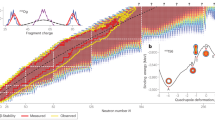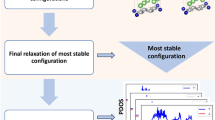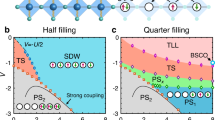Abstract
THE number of elements of which the isotopic nature has been determined is now large enough to give considerable weight to statistical relations. Among elements of odd atomic number two definite empirical rules stand out. The first is that none of them consists of more than two isotopes. This has no exception so far. The second is that the more abundant of the two constituents, or both, will be of odd atomic weight. The only exception to this is the element nitrogen; moreover, the only even isotopes at all are the weaker constituents of lithium and boron. That both of these rules should be violated by copper having the three isotopes 62, 64, 66, announced recently by Prof. Dempster, seemed therefore excessively improbable.
This is a preview of subscription content, access via your institution
Access options
Subscribe to this journal
Receive 51 print issues and online access
$199.00 per year
only $3.90 per issue
Buy this article
- Purchase on SpringerLink
- Instant access to full article PDF
Prices may be subject to local taxes which are calculated during checkout
Similar content being viewed by others
Author information
Authors and Affiliations
Rights and permissions
About this article
Cite this article
ASTON, F. The Mass-Spectrum of Copper. Nature 112, 162 (1923). https://doi.org/10.1038/112162a0
Issue date:
DOI: https://doi.org/10.1038/112162a0



